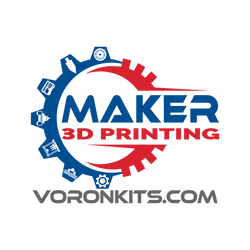Improving the Quality of Your 3D Prints with Input Shaping
3D printing is a complex process that requires precise control over many different variables to produce high-quality prints. One of the biggest challenges in 3D printing is reducing vibrations in the printer's frame, which can result in visible artifacts in the printed object, such as ghosting, ringing, or overshoot. Fortunately, there is a solution to this problem: input shaping.
Input shaping is a powerful feature in Klipper firmware that can significantly improve the quality of 3D prints by reducing vibrations in the printer's frame. By using advanced algorithms to analyze the printer's motion and apply corrections in real-time, input shaping can help to produce smoother, higher-quality prints with fewer visible artifacts.
So why should you use input shaping in your 3D printing workflow? Here are some of the key benefits:
-
Better print quality: Input shaping can significantly improve the overall quality of your 3D prints by reducing the appearance of ghosting, ringing, and overshoot. This can result in a cleaner, more precise, and more visually appealing printed object.
-
Faster print speeds: Input shaping can also help to increase the speed at which you can print while maintaining high print quality. By reducing vibrations in the printer's frame, input shaping allows the printer to operate at higher speeds without sacrificing print quality.
-
Easy to set up: Setting up input shaping in Klipper firmware is relatively straightforward and can be done with a few simple configuration steps. Once configured, input shaping runs automatically in the background, making it easy to use and maintain.
-
Customizable: Input shaping is highly customizable, allowing you to fine-tune the parameters to achieve optimal results for your specific printer and print job. By adjusting the input shaping parameters, you can achieve the perfect balance between print quality and speed for your needs.
-
Works with a wide range of printers: Input shaping is compatible with a wide range of 3D printers, making it a versatile solution that can be used by many different types of users.
Overall, input shaping is a powerful feature that can significantly improve the quality of your 3D prints. By reducing vibrations in the printer's frame, input shaping can help to eliminate or reduce visual artifacts, resulting in smoother, more precise prints. If you're looking to take your 3D printing to the next level, consider using input shaping in your workflow.
Instructions on how to perform input shaping
